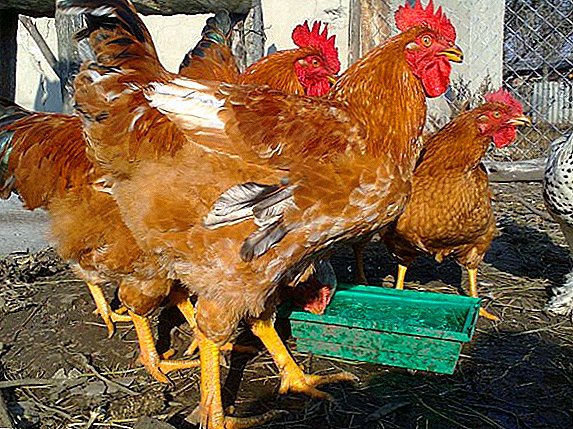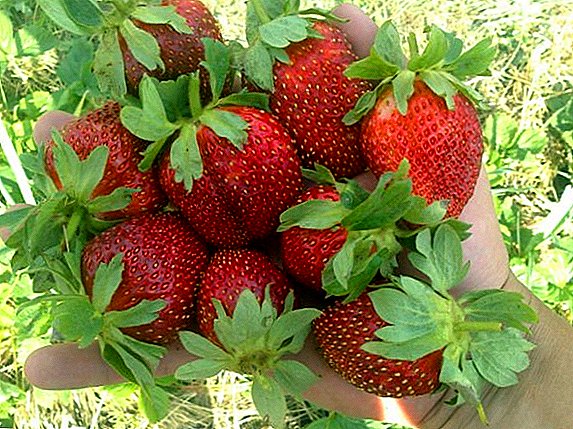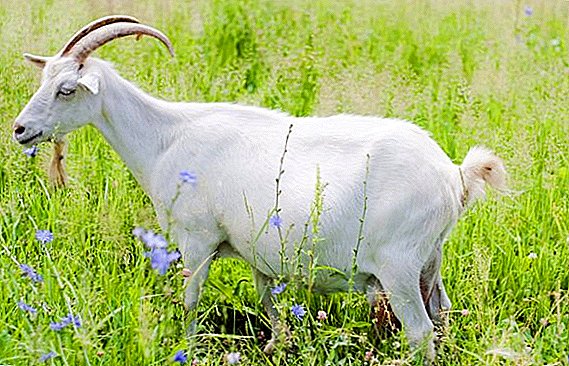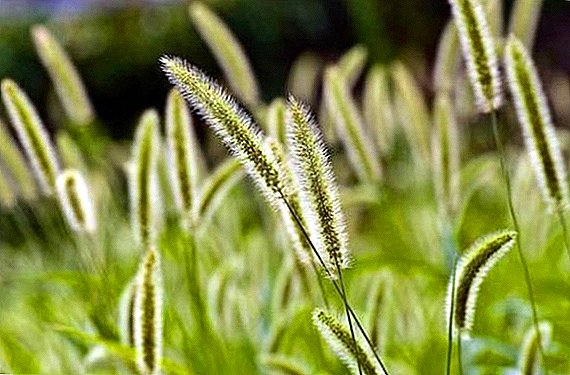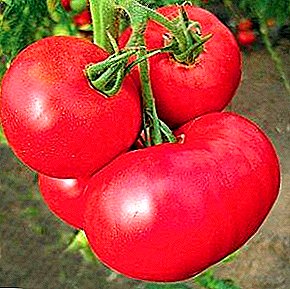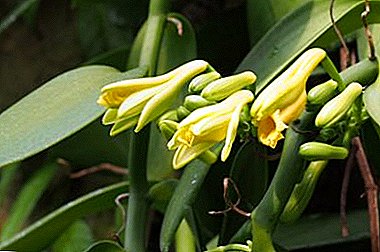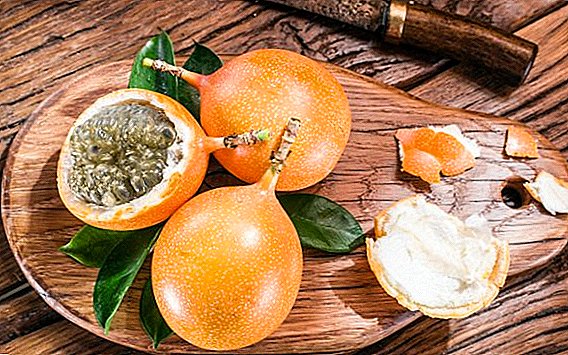 On a journey it is always interesting to taste new, unusual food, especially fruit. Granadilla is one of those exotic tropical fruits, having tried that, you can get an incredible pleasure. Let's learn more about what this fruit is, how to use it and what effect it has on the human body.
On a journey it is always interesting to taste new, unusual food, especially fruit. Granadilla is one of those exotic tropical fruits, having tried that, you can get an incredible pleasure. Let's learn more about what this fruit is, how to use it and what effect it has on the human body.
What is Granadilla
Granadilla is a fast-growing tree liana, a member of the Passionflower genus of the Passionflower family. Its homeland is South America, but today it can also be found in Hawaii, Haiti, New Guinea, Guam and Jamaica.
Did you know? The local population of South America uses not only the fruits of granadilla. Its dried leaves are used as tea leaves or cigarette twists, and local healers use dried root for recipes against epilepsy and constipation.
Granadilla fruits are ovoid with a hard, slippery skin of yellow, orange or red color with a diameter of 6-7 cm. The flesh is almost transparent, gelatinous, with black soft seeds.  When reaching ripeness, the fruit is covered with small black specks, while the average ripe fruit weighs about 200 grams. Granadilla is a perishable fruit, its shelf life is a week at room temperature.
When reaching ripeness, the fruit is covered with small black specks, while the average ripe fruit weighs about 200 grams. Granadilla is a perishable fruit, its shelf life is a week at room temperature.
Important! When buying granadilla, choose a fruit with a dense and smooth skin. Fruit without the characteristic black specks or soft is not worth taking.
There are several dozen types of granadilla, the most popular of them are:
- Granadilla Giant - oval fruit with a length of 10-30 cm and a width of 8-12 cm with yellow or greenish thin skin, sour-white or pink flesh and rather large brown-purple seeds;

- granadilla yellow - a small fruit with a diameter of up to 6 cm with a thick yellow or orange peel, light jelly-like pulp with an intense sweet taste and numerous flat seeds;
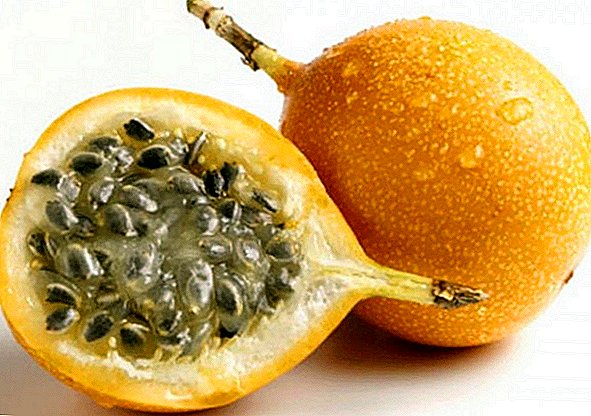
- Granadilla Blue - yellow fruits of an oval shape about 6 cm long and about 4 cm in diameter, inside numerous grains of red color;

- banana granadilla - oval-shaped fruits up to 12 cm long and up to 4 cm wide pale yellow or dark green in color with tart-sweet dark orange pulp with a lot of black seeds;
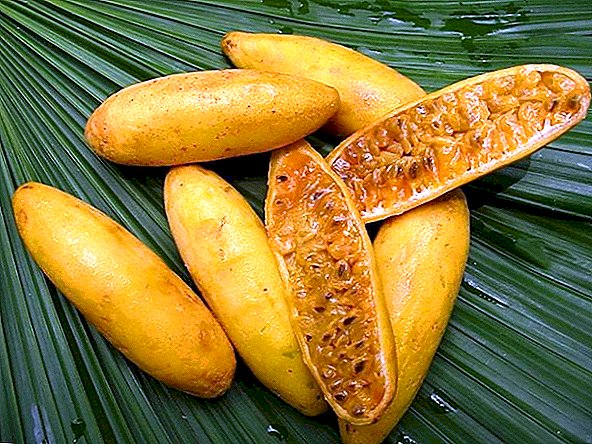
- granadilla edible or passion fruit - round or oval fruit with the size of 40-80 mm of yellow, red, purple or green color with juicy pulp and numerous seeds.
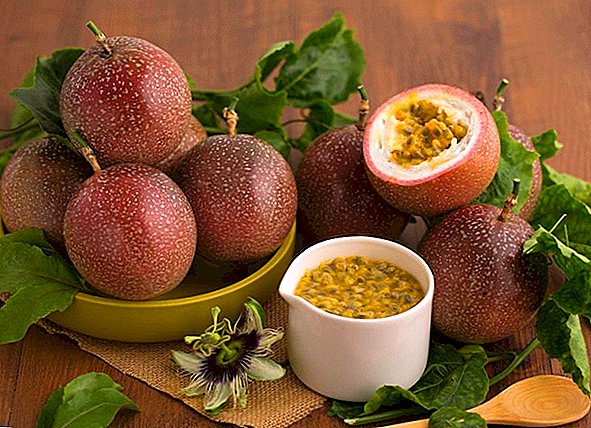
How is it
The fruit is good fresh, its sweet watery taste resembles melon or gooseberry, and the flesh is similar to a spreading jelly with numerous seeds. The fruit is carefully cut into two parts, the pulp is removed with a spoon and used along with the seeds.
You will be interested to read about the beneficial properties of melons and gooseberries.
In addition, granadilla is used in salads, fresh juices and various desserts. Also, some dishes are prepared from it - cocktails, jellies, puddings, mousses, casseroles.  Granadilla Cocktail
Granadilla Cocktail
The nutritional value
Energy value of 100 grams of fresh granadilla:
- proteins - 0.5 g;
- fats - 0.1 g;
- carbohydrates - 8.0 g;
- Calorie content - 46 kcal.
Did you know? In the American city of Asheville in North Carolina there is a city "Edible Park", where more than 40 species of different fruit and nut trees grow, and every inhabitant can come there and pick fresh fruit.
Nutritional value and composition:
- water - 72.93 g;
- dietary fiber - 10.4 g;
- ash substances - 0.8 g.
 Vitamins:
Vitamins:- vitamin C - 30 mg;
- Vitamin K - 0.7 mcg;
- vitamin B2 - 0.13 mg;
- Vitamin B4 - 7.6 mg;
- Vitamin B6 - 0.1 mg;
- Vitamin B9 - 14 micrograms;
- Vitamin PP - 1.5 mg.
Find out what vitamins and minerals are rich in such exotic fruits as papaya, kivano, lychee, longan, feijoa, bail and avocado.
Minerals:
- potassium (K) - 348 mg;
- phosphorus (P) - 68 mg;
- magnesium (Mg) - 29 mg;
- sodium (Na) - 28 mg;
- calcium (Ca) - 12 mg;
- iron (Fe) - 1.6 mg;
- Zinc (Zn) - 0.1 mg;
- copper (Cu) - 0.09 mg;
- selenium (Se) - 0.6 mcg.

Beneficial features
The fruit has the following beneficial properties:
- a high concentration of ascorbic acid is indispensable for the prevention and treatment of colds (ARVI, flu);
- phosphorus helps to strengthen bone tissue (osteoporosis);
- potassium improves the functioning of the heart and blood vessels, urinary and nervous systems (hypertension, kidney diseases);
- sodium is indispensable for normal intracellular pressure; it is responsible for the volume of organic fluid (edema);
- iron is needed to regulate the amount of hemoglobin in the blood (anemia);
- magnesium has beneficial effects on the activity of nerve endings and muscle fibers;
- a high content of fiber cleans the body, removes toxins and stimulates peristalsis (constipation);
- essential oils have a sedative effect (neurosis, depression);
- a wide vitamin and mineral complex allows you to maintain the overall tone of the body and quickly recover from stress;
- strengthens hair and nails, contributes to their better growth;
- helps to get rid of migraines and restore healthy sleep.
For the prevention and treatment of colds also used: verbena, anemone, nutmeg, amaranth, linden, raspberry and sage meadow.
Contraindications and harm
There are practically no contraindications to the use of this fruit. Like any other, it should be used with caution in patients with diabetes.
Important! Granadilla seeds have an unusual fruit characteristic of tenderness and softness. For this reason, they are considered edible and do not need to be extracted from the fruit before eating or cooking.
You also need to limit it to those who are prone to gaining excess weight. Although granadilla does not belong to high-calorie foods, a high content of fructose can cause a jump in blood sugar and a feeling of hunger.  Do not forget about the diuretic and laxative effects of granadilla and not abuse it, especially with a tendency to diarrhea. In addition, you can not eat fruit to people with individual intolerance to it and to be cautious with a tendency to allergic reactions.
Do not forget about the diuretic and laxative effects of granadilla and not abuse it, especially with a tendency to diarrhea. In addition, you can not eat fruit to people with individual intolerance to it and to be cautious with a tendency to allergic reactions.
Also provide a diuretic effect: apples, buckthorn bark, linden, sedge, boxwood, red elderberry, safflower, persimmon, asparagus, black radish and juniper.
Dish recipes
Mousse
Ingredients:
- ripe granadilla - 2 pieces;
- ripe banana - 3 pieces;
- butter - 25 g;
- Kiwi - one large;
- cream (fat content of 22-33%) - 0.5 cups;
- granulated sugar - 35 g;
- juice 1/3 of medium-sized lemon.

Step-by-step recipe:
- Peel and knead the bananas with a fork.
- Melt the butter in a water bath and pour in the banana puree.
- Peel granadillas, remove the pulp, mix with banana puree and put everything in the fridge.
- Peel kiwi, chop, add lemon juice.
- Beat cream with sugar.
- Granadillo-banana mixture fill with whipped cream.
- Dispose of kiwi in containers, then granadillas with bananas, do not mix. Cool for a couple of hours before serving.

Cottage cheese casserole
Ingredients:
- ripe granadilla - 2 pieces;
- medium-fat cottage cheese - 450 g;
- granulated sugar - 80 g;
- chicken egg - 1 piece;
- butter - 2 tbsp. spoons;
- starch - 1.5 tbsp. spoons.

Step-by-step recipe:
- Peel the granadilla, extract the pulp, squeeze the juice out of it, add the starch.
- In the cottage cheese add eggs and sugar, mix.
- Cottage cheese mix with juice, put in a greased form and bake for half an hour at a temperature of 180-190 degrees Celsius.
- Remove from the oven, cool, decorate the piece with whipped cream and add fruit pulp.

Pudding
Ingredients:
- ripe granadilla - 3 pieces;
- ripe lime - 1.5-2 pieces;
- brown sugar - 120 g;
- flour - 60 g;
- butter - 60 g;
- chicken egg - 2 pieces;
- milk - 0.5 cups;
- baking powder - 1 tsp.

Step-by-step recipe:
- In chicken eggs, separate the yolks from the whites, whip the yolks with half the amount of sugar.
- Combine yolks with butter and mix. Add flour and mix again.
- Wash the lime and granadilla. Grate lime zest, squeeze juice from pulp. Extract the pulp of granadilla.
- Squirrel whip with the remaining sugar, slowly add lime juice and all other components.
- Heat the oven to 180 degrees Celsius, bake until golden brown. When serving, add a spoonful of granadilla pulp to each piece.
 So now you know what granadilla is and how it can be used. If you have the opportunity to try this exotic fruit, then be sure to use it. Fresh tropical sweet granadilla certainly pushes you to dreams of faraway countries and exciting adventures, and take care of your health.
So now you know what granadilla is and how it can be used. If you have the opportunity to try this exotic fruit, then be sure to use it. Fresh tropical sweet granadilla certainly pushes you to dreams of faraway countries and exciting adventures, and take care of your health.






